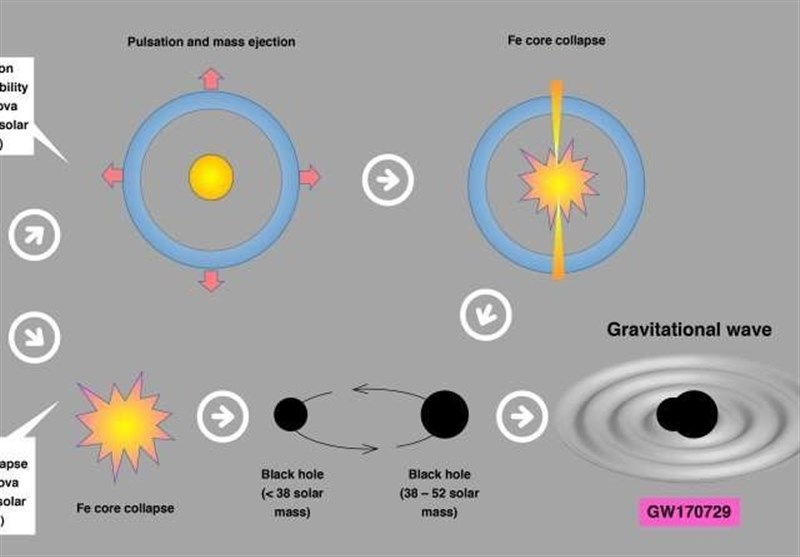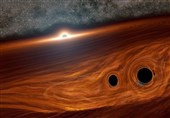Researchers Find Origin, Maximum Mass of Massive Black Holes
TEHRAN (Tasnim) – A team of theoretical physics researchers have found the evolutionary origin and the maximum mass of black holes which are discovered by the detection of gravitational waves.
The exciting detection of gravitational waves with LIGO (laser interferometer gravitational-wave observatory) and VIRGO (Virgo interferometric gravitational-wave antenna) have shown the presence of merging black holes in close binary systems.
The masses of the observed black holes before merging have been measured and turned out to have a much larger than previously expected mass of about 10 times the mass of the Sun (solar mass). In one such event, GW170729, the observed mass of a black hole before merging is actually as large as about 50 solar masses. But it is not clear which stars can form such a massive black hole, or what the maximum size of black holes observed by the gravitational wave detectors is.
To answer this question, a research team at the Kavli Institute for the Physics and Mathematics of the Universe (Kavli IPMU) consisting of Project Researcher Shing-Chi Leung (currently at the California Institute of Technology), Senior Scientist Ken'ichi Nomoto, and Visiting Senior Scientist Sergei Blinnikov (professor at the Institute for Theoretical and Experimental Physics in Mosow) have investigated the final stage of the evolution of very massive stars, in particular 80 to 130 solar mass stars in close binary systems.
In close binary systems, initially 80 to 130 solar mass stars lose their hydrogen-rich envelope and become helium stars of 40 to 65 solar masses. When the initiall solar mass stars form oxygen-rich cores, the stars undergo dynamical pulsation because the temperature in the stellar interior becomes high enough for photons to be converted into electron-positron pairs. Such 'pair-creation' makes the core unstable and accelerates contraction to collapse.
In the over-compressed star, oxygen burns explosively. This triggers a collapse and then rapid expansion of the star. A part of the stellar outer layer is ejected, while the inner part cools down and collapses again. The pulsation (collapse and expansion) repeats until oxygen is exhausted. This process is called pulsational pair-instability (PPI). The star forms an iron core and finally collapses into a black hole, which would trigger the supernova explosion, known as PPI-supernova (PPISN).
By calculating several such pulsations and associated mass ejections until the star collapses to form a black hole, the team found that the maximum mass of the black hole formed from pulsational pair-instability supernova is 52 solar masses.
Stars initially more massive than 130 solar masses (which form helium stars more massive than 65 solar masses) undergo the pair instability supernova process due to explosive oxygen burning, which disrupts the star completely with no black hole remnant. Stars above 300 solar masses collapse and may form a black hole more massive than about 150 solar masses.
The above results predict that there exists a 'mass-gap' in the black hole mass between 52 and about 150 solar masses. The results mean that the 50 solar mass black hole in GW170729 is most likely a remnant of a pulsational pair-instability supernova.
The result also predicts that a massive circumstellar medium is formed by the pulsational mass loss, so that the supernova explosion associated with the black hole formation will induce collision of the ejected material with the circumstellar matter to become super-luminous supernovae. Future gravitational wave signals will provide a base upon which their theoretical prediction will be tested.






